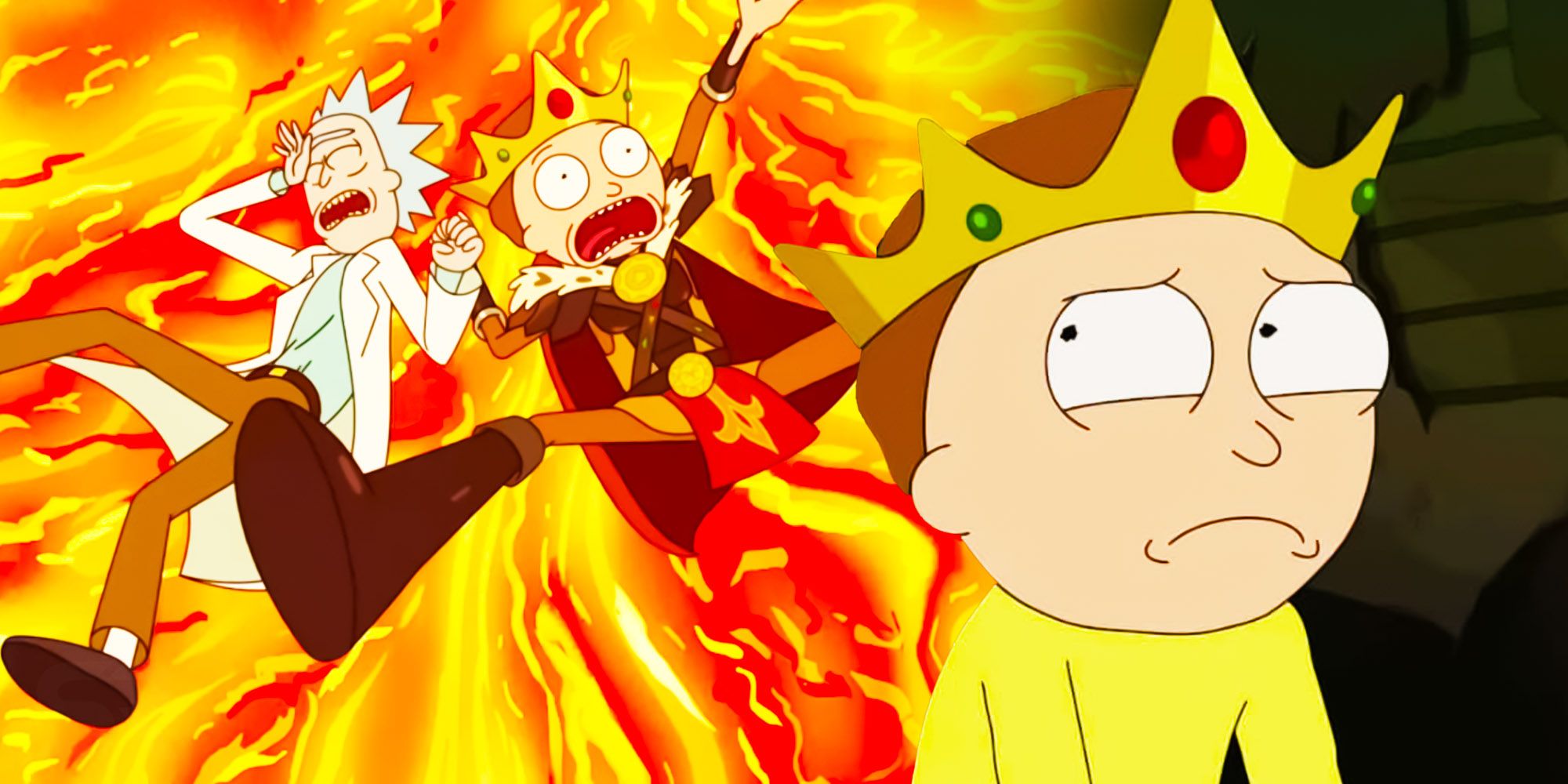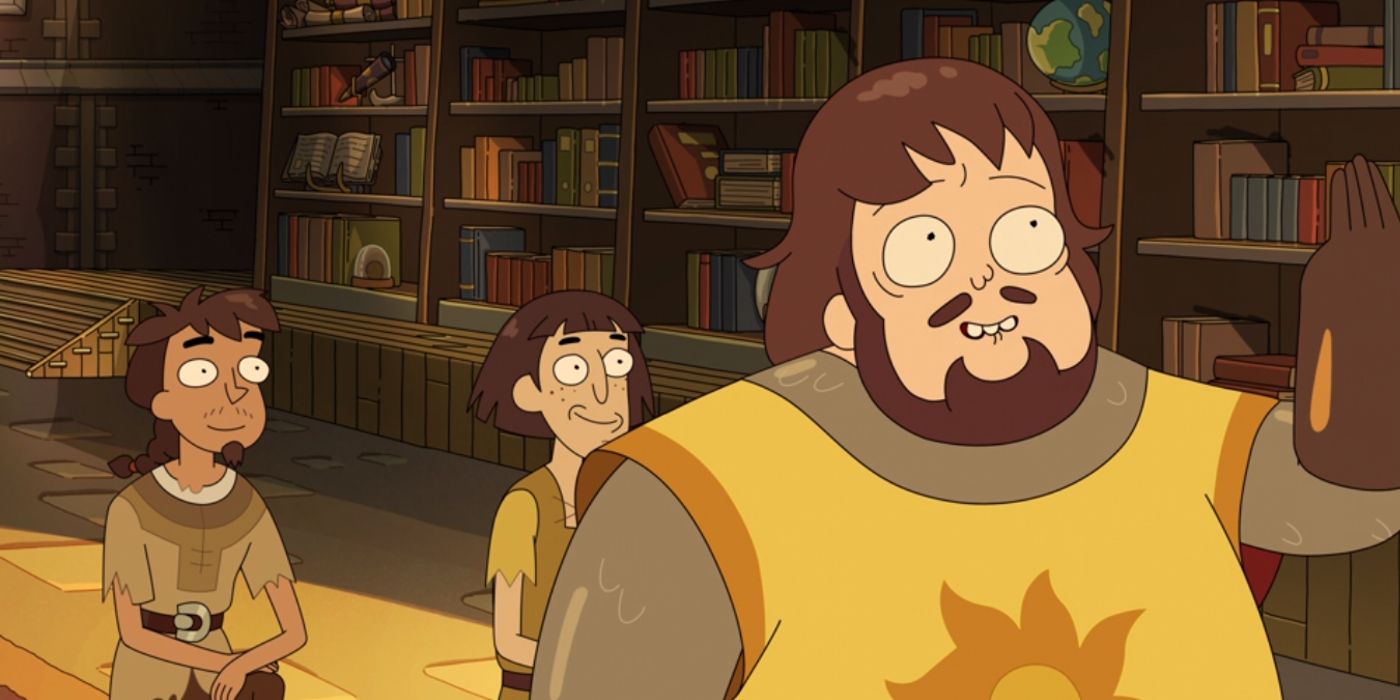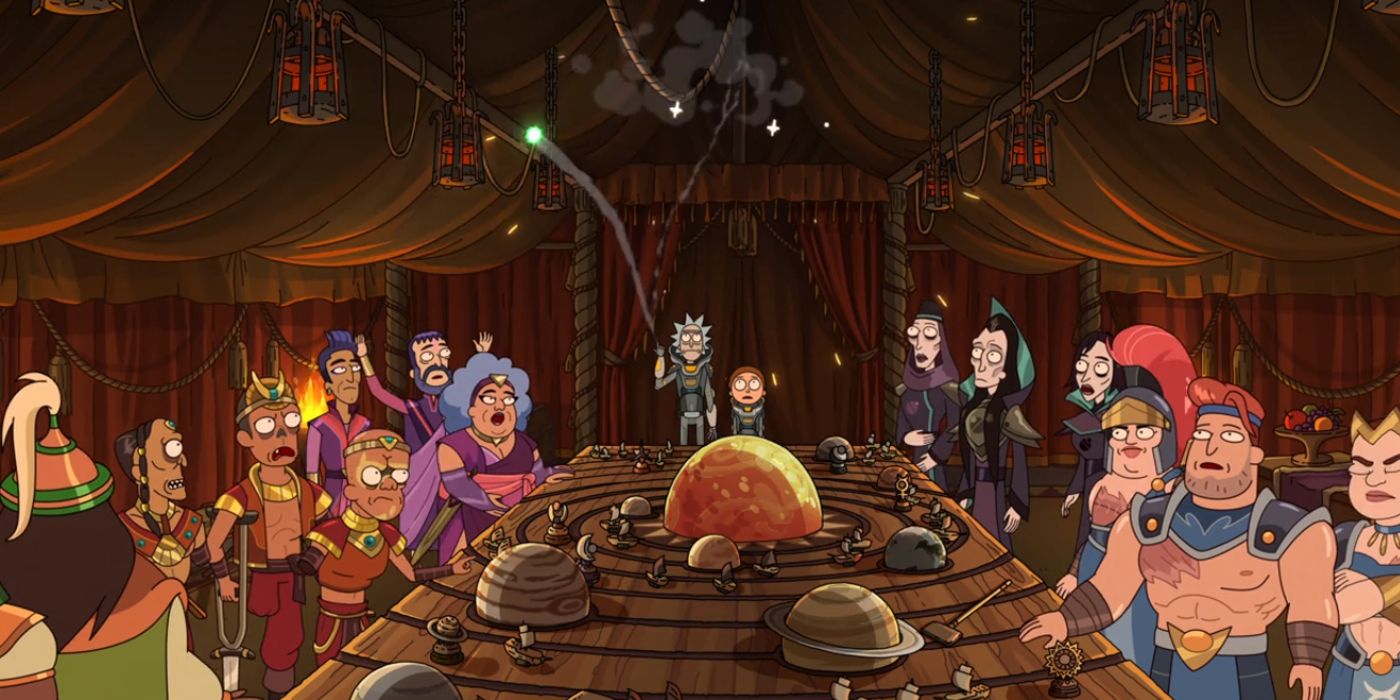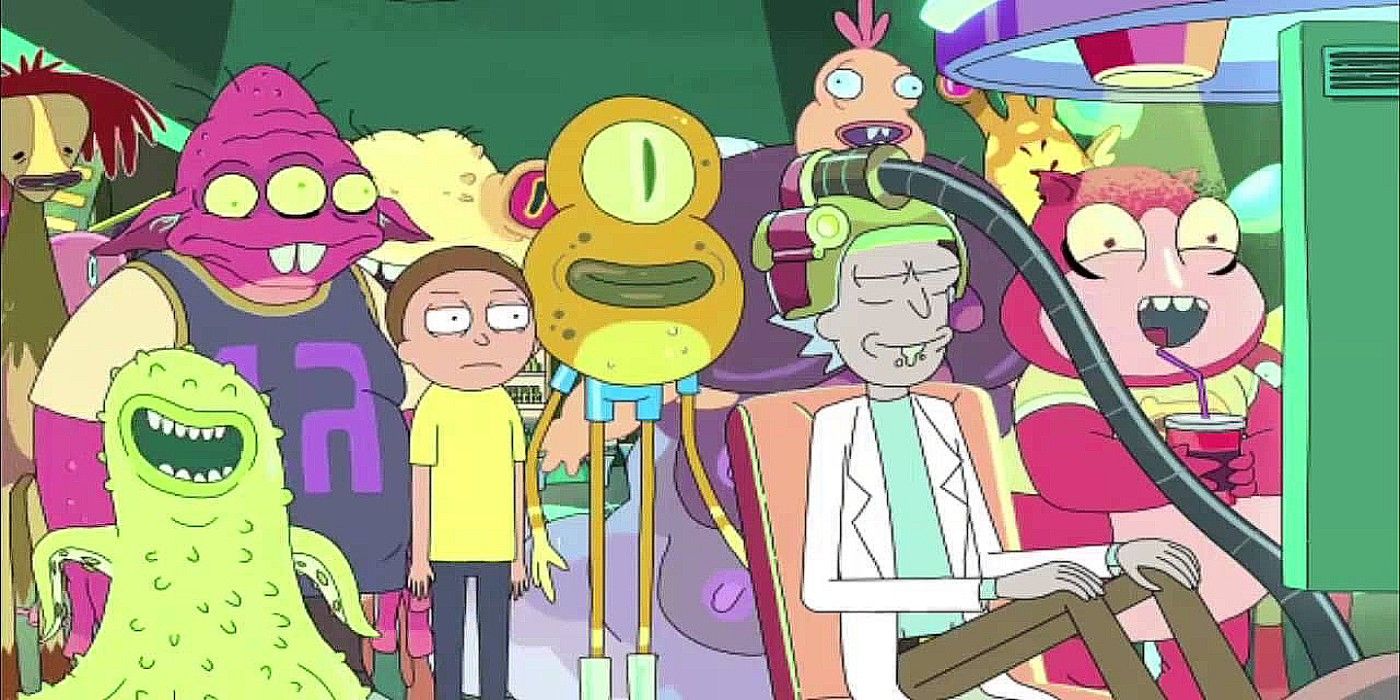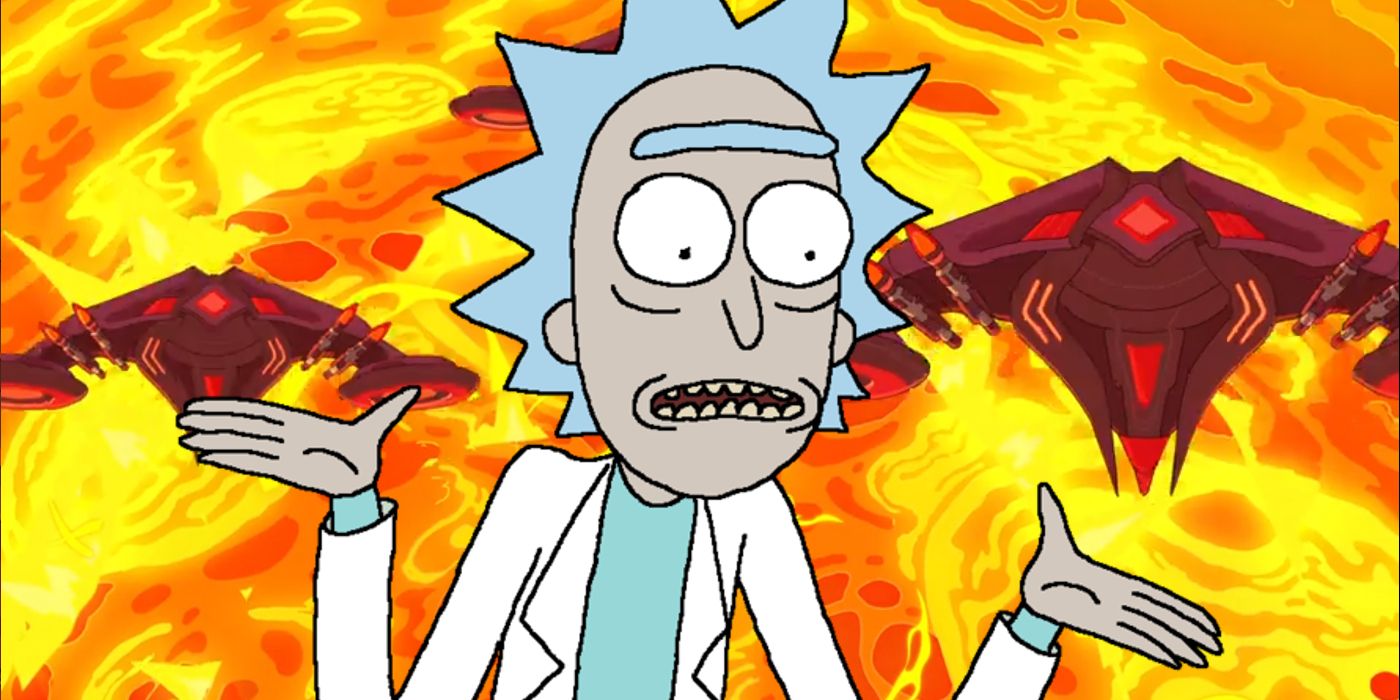Warning: Spoilers for Rick and Morty season 6, episode 9.Rick and Morty season 6 has managed the tricky feat of breaking the show’s rules while still also maintaining its status quo. The Rick and Morty season 5 finale seemed to promise a completely different tone for the show going forward. As the extent of Rick’s evil was exposed alongside his tragic backstory, and the titular duo’s means of interdimensional travel was destroyed, it looked like Rick and Morty season 6 would feature a redemption arc for Rick and a more serialized, less episodic approach to storytelling for the show.
While the latter hasn’t come to pass, Rick’s character has grown despite Rick and Morty’s formula remaining the same. One episode after Dr. Wong’s reappearance asked whether Rick’s nihilism would always ruin his attempts at self-improvement, Rick and Morty season 6, episode 9, “A Rick in King Mortur's Mort,” has proven the answer is "no" while still keeping the light-hearted tone of the show intact. This episode’s plot is just the latest example of Rick and Morty following its season 1 rule book in terms of tone and style while simultaneously subverting and changing the character dynamics of those earlier seasons.
Rick and Morty Season 6, Episode 9 Explained
In Rick and Morty season 6, episode 9, “A Rick in King Mortur's Mort,” Morty gets himself and Rick into a bind by being naive. Specifically, he accepts the offer of a knighthood, only to later discover this comes at the cost of cutting off his genitals, and then it accidentally causes interplanetary war by disbanding the knights of the sun. While Rick and Morty recently referenced season 1 with the Butter Robot’s heartbreaking return, this episode's entire plot was a storyline that could have come directly from the first episodes of the show. As if to underline this fact, in the story's conclusion, Rick helps the pair escape certain death with an absurdly elaborate, improvised deus ex machina situation.
This is the same formula seen in numerous episodes of early Rick and Morty seasons — outside a few outings where Rick was the one getting himself and Morty into scrapes. Everything from season 1, episode 6, “Rick Potion #9,” to season 2, episode 2, “Mortynight Run,” fits the same rough summary, with Morty’s naïveté causing trouble while Rick’s almost limitless powers save the day. However, shortly after Rick and Morty season 6 parodied Rick’s potential redemption with the Pissmaster plot, “A Rick in King Mortur's Mort” has proven Rick still has the potential to change for good as the character learns and grows even within the confines of an otherwise conventional episode’s story.
“A Rick In King Mortur’s Mort” Broke Rick and Morty’s Rules
When Morty screws up in Rick and Morty season 6, episode 9, "A Rick in King Mortur's Mort,” Rick doesn’t berate Morty and doesn’t tell him what to do next. He helps facilitate his grandson’s plan and, when that eventually fails, Rick finally tells Morty he loves him and is proud of him despite how disastrously the story has panned out. It is a surprising subversion of the usual dynamic between the characters and all the more unexpected because the scene occurs in an episode that otherwise relies on the typical formula of Rick and Morty. For a few episodes, Rick seemingly had no character arc in season 6 when Rick and Morty appeared to drop his potential redemption.
"A Rick in King Mortur's Mort” brings back Rick’s redemption arc, but it does so in a way that doesn't disrupt the foundations of Rick and Morty as a series. The last time that Rick even considered changing the way that he treated his grandson, this resulted in him abandoning Morty and setting the events of Rick and Morty’s show-shaking two-part season 5 finale in motion. When Rick admitted that his and Morty’s dynamic was innately toxic, this revelation threatened to end Rick and Morty’s episodic adventure format. However, after season 6 revealed that Rick and Morty know they're in a show, “A Rick in King Mortur's Mort” proves these changes don't necessarily need to derail the series.
Rick and Morty Season 6 Follows The Show’s Old Formula
Throughout season 6, Rick and Morty has provided viewers with standalone, self-contained stories that only last one episode each. While there have been a few playful references to multi-episode arcs, Rick and Morty season 6 hasn’t relied on the show’s established canon outside the premiere. Rick and Morty season 6, episode 7, “Full Meta Jackrick,” even implied that the heroes knew they were in a show, but still managed to fit its story into a single episode that didn’t impact the rest of the season’s adventures. This fits the style laid out in earlier seasons of Rick and Morty but, as with season 6, episode 9, “A Rick in King Mortur's Mort,” there is a pivotal difference in these new episodes.
From Rick keeping Pissmaster’s note to him admitting that he values Morty at the end of “A Rick in King Mortur's Mort,” Rick and Morty’s antihero is changing. In the early seasons of Rick and Morty, storylines relied on the unchanging simplicity of the main characters and their predictable behavior. Monty was naive and inept, Jerry was cowardly and inept, Summer was aloof and detached, and Beth was aloof and neurotic. Even Rick’s ability to fix every situation with a handy, previously unmentioned ability, skill, or weapon was predictable in its own way, as viewers could be sure that almost every adventure would end with Rick coming up on top despite his flaws.
Season 6 Keeps Breaking Rick and Morty Rules
Much like the first appearance of Rick and Morty’s villainous Mr. Nimbus shed light on Rick’s backstory and proved his powers sometimes failed him, the character’s return also augured a change for Rick. This time it was Rick’s ability to grow and change without completely rewriting the show’s formula. Rick’s character development now sticks when it does happen and changes how Rick and Morty’s heroes act, meaning the reversion to the status quo at the end of each episode isn’t a hard reset in the way that it was in season 1.
When Rick and Morty buried their old selves at the end of the “Rick Potion #9” episode, it was taken as a given that Rick was right, Morty was wrong, and Rick had saved the day after Morty’s screw-up. In contrast, at the end of season 6, episode 9, “A Rick in King Mortur's Mort,” Rick tells Morty he did well. With this, even in a season with a cameo from Jesus Christ, Rick and Morty has managed to sneak in the biggest surprise that the series has shown throughout season 6 so far. With this character growth, Rick and Morty proves it can keep its early season formula alive while Rick’s character grows, instead of forcing viewers to choose between consistency or change.
New episodes of Rick and Morty season 6 air Sundays on Adult Swim.

